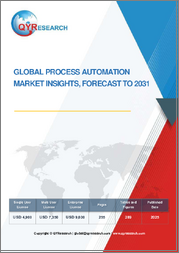
|
시장보고서
상품코드
1579412
세계의 자율 기업 시장 : 기술별, 컴포넌트 유형별, 비즈니스 기능별, 솔루션별, 전개 모델별, 기업 규모별, 산업 분야별, 용도별 예측(2025-2030년)Autonomous Enterprise Market by Technology, Component Type, Business Functions, Solutions, Deployment Model, Enterprise Size, Industry Vertical, Application - Global Forecast 2025-2030 |
||||||
자율 기업 시장은 2023년 386억 달러로 평가되었고, 2024년에는 442억 5,000만 달러에 이를 것으로 예측되며, 복합 연간 성장률(CAGR) 16.87%로 성장하여, 2030년에는 1,150억 2,000만 달러에 도달 예측됩니다.
자율 기업 개념은 인공지능(AI), 머신러닝, 로보틱 프로세스 자동화(RPA)를 활용하고 최소한의 인적 개입으로 기능을 자동화하는 조직을 포함합니다. 이 진화는 효율성을 높이고 비용을 절감하며 실시간으로 데이터를 기반으로 의사 결정을 내릴 필요성에 의해 추진되고 있습니다. 애플리케이션은 금융, 물류, 제조 등 업계 전반에 걸쳐 퍼져 있으며, 최종 용도는 비즈니스 최적화, 고객 서비스 강화, 예지 보전에 이르기까지 다양합니다. 시장은 AI 기술의 진보, 빅데이터의 가용성 증가, 업무 효율화 요구 증가 등 주요 영향요인에 의해 성장의 칭찬이 되고 있습니다. AI와 애널리틱스의 기능이 확대되고 깊은 통찰력을 얻을 수 있게 됨으로써 기업은 비효율성에 적극적으로 대처할 수 있게 되어 새로운 비즈니스 기회가 탄생하고 있습니다. 이러한 기회를 활용하기 위해 기업은 확장 가능한 AI 솔루션에 투자하고 강력한 데이터 관리 전략을 수립하는 데 주력해야합니다. 그러나 과제로는 데이터 프라이버시에 대한 우려, 기술 통합에 필요한 엄청난 양의 초기 투자, AI 전문 지식의 잠재적인 기술 격차 등이 있습니다. 또한 조직 내 변화에 대한 저항이 도입을 방해할 수 있습니다. 연구가 익숙한 혁신적인 분야로는 자율적인 사이버 보안 시스템, AI 윤리 프레임 워크, 원활한 인간 및 기계 협업 인터페이스 개발 등이 있습니다.이러한 분야를 다루는 것은 원활한 도입을 촉진할 뿐만 아니라 시장의 차별화 요인이 될 수도 있습니다. 또한 기업은 민첩성을 유지하면서 참신한 솔루션을 개척하기 위해 AI 신흥 기업과의 협업을 모색해야 합니다. 시장은 급속한 기술의 진보와 진화하는 규제 상황을 특징으로 하며, 기업은 적응력과 선견성을 유지해야 합니다. 한계를 극복하고 혁신을 수락하며 규제 기준을 충족함으로써 기업은 자율적인 엔터프라이즈 웨이브의 최전선에 서서 디지털화된 세계에서 경쟁 우위를 확보할 수 있습니다.
| 주요 시장 통계 | |
|---|---|
| 기준년(2023) | 386억 달러 |
| 예측년(2024) | 442억 5,000만 달러 |
| 예측년(2030) | 1,150억 2,000만 달러 |
| 복합 연간 성장률(CAGR)(%) | 16.87% |
시장 역학: 빠르게 진화하는 자율 기업 시장의 주요 시장 인사이트 공개
자율 기업 시장은 수요 및 공급의 역동적인 상호 작용으로 변화를 겪고 있습니다. 이러한 시장 역학의 진화를 이해함으로써 기업은 충분한 정보를 바탕으로 투자결정, 전략적 결정 정밀화, 새로운 비즈니스 기회 획득에 대비할 수 있습니다. 이러한 동향을 종합적으로 파악함으로써 기업은 정치적, 지리적, 기술적, 사회적, 경제적인 영역에 걸친 다양한 리스크를 경감할 수 있음과 동시에, 소비자 행동과 그것이 제조 비용이나 구매 동향에 미치는 영향을 보다 명확하게 이해할 수 있습니다.
- 시장 성장 촉진요인
- 자율적인 사이버 보안 및 리스크 관리 솔루션에 대한 수요 증가
- 데이터 주도의 의사 결정과 실시간 통찰에 대한 수요 증가
- 자율 기업의 채용을 촉진하는 민첩하고 적응성이 높은 비즈니스 모델에의 요구의 고조
- 시장 성장 억제요인
- 높은 초기 도입 비용이 자율형 기업의 채용을 제한하고 있다
- 시장 기회
- 맞춤형 예측 서비스로 고객 경험 향상
- 자율적인 고객 서비스와 지원 시스템 개발을 위한 투자 증가
- 시장의 과제
- 자율 시스템과 기존 인프라 간의 통합 복잡성
Porter's Five Forces: 자율 기업 시장을 탐색하는 전략 도구
Porter's Five Forces Framework는 시장 상황경쟁 구도를 이해하는 중요한 도구입니다. Porter's Five Forces Framework는 기업의 경쟁력을 평가하고 전략적 기회를 탐구하는 명확한 기술을 제공합니다. 이 프레임워크는 기업이 시장 내 세력도를 평가하고 신규 사업의 수익성을 결정하는 데 도움이 됩니다. 이러한 통찰을 통해 기업은 자사의 강점을 활용하고 약점을 해결하고 잠재적인 과제를 피함으로써 보다 강인한 시장에서의 포지셔닝을 확보할 수 있습니다.
PESTLE 분석 : 자율 기업 시장에서 외부 영향을 파악
외부 거시 환경 요인은 자율 엔터프라이즈 시장의 성과 역학을 형성하는데 매우 중요한 역할을 합니다. 정치적, 경제적, 사회적, 기술적, 법적, 환경적 요인 분석은 이러한 영향을 탐색하는 데 필요한 정보를 제공합니다. PESTLE 요인을 조사함으로써 기업은 잠재적인 위험과 기회를 더 잘 이해할 수 있습니다. 이 분석을 통해 기업은 규제, 소비자 선호, 경제 동향의 변화를 예측하고 앞으로 예상되는 적극적인 의사 결정을 할 준비를 할 수 있습니다.
시장 점유율 분석 자율 엔터프라이즈 시장 경쟁 구도 파악
자율 엔터프라이즈 시장의 상세한 시장 점유율 분석을 통해 공급업체의 성과를 종합적으로 평가할 수 있습니다. 기업은 수익, 고객 기반, 성장률 등 주요 지표를 비교하여 경쟁 포지셔닝을 밝힐 수 있습니다. 이 분석을 통해 시장 집중, 단편화, 통합 동향을 밝혀내고 공급업체는 경쟁이 치열해지면서 자사의 지위를 높이는 전략적 의사 결정을 내리는 데 필요한 지식을 얻을 수 있습니다.
FPNV 포지셔닝 매트릭스 자율 엔터프라이즈 시장에서 공급업체의 성능 평가
FPNV 포지셔닝 매트릭스는 자율 엔터프라이즈 시장에서 공급업체를 평가하는 중요한 도구입니다. 이 행렬을 통해 비즈니스 조직은 공급업체의 비즈니스 전략과 제품 만족도를 기준으로 평가하여 목표에 맞는 충분한 정보를 바탕으로 의사 결정을 내릴 수 있습니다. 네 가지 사분면을 통해 공급업체를 명확하고 정확하게 부문화하고 전략 목표에 가장 적합한 파트너 및 솔루션을 파악할 수 있습니다.
전략 분석 및 권장 자율 기업 시장에서 성공에 대한 길을 그립니다.
자율 기업 시장의 전략 분석은 시장에서의 프레즌스 강화를 목표로 하는 기업에 필수적입니다. 주요 자원, 역량 및 성과 지표를 검토함으로써 기업은 성장 기회를 파악하고 개선을 위해 노력할 수 있습니다. 이러한 접근 방식을 통해 경쟁 구도에서 과제를 극복하고 새로운 비즈니스 기회를 활용하여 장기적인 성공을 거둘 수 있는 체제를 구축할 수 있습니다.
이 보고서는 주요 관심 분야를 포괄하는 시장의 종합적인 분석을 제공합니다.
1. 시장 침투 : 현재 시장 환경의 상세한 검토, 주요 기업의 광범위한 데이터, 시장 도달범위 및 전반적인 영향력 평가.
2. 시장 개척도 : 신흥 시장의 성장 기회를 파악하고 기존 분야의 확장 가능성을 평가하며 미래 성장을 위한 전략적 로드맵을 제공합니다.
3. 시장 다양화 : 최근 제품 출시, 미개척 지역, 업계의 주요 진보, 시장을 형성하는 전략적 투자를 분석합니다.
4. 경쟁 평가 및 정보 : 경쟁 구도를 철저히 분석하여 시장 점유율, 사업 전략, 제품 포트폴리오, 인증, 규제 당국 승인, 특허 동향, 주요 기업의 기술 진보 등을 검증합니다.
5. 제품 개발 및 혁신 : 미래 시장 성장을 가속할 것으로 예상되는 최첨단 기술, R&D 활동, 제품 혁신을 강조합니다.
또한 이해관계자가 충분한 정보를 얻고 의사결정을 할 수 있도록 중요한 질문에 대답하고 있습니다.
1. 현재 시장 규모와 향후 성장 예측은?
2. 최고의 투자 기회를 제공하는 제품, 부문 및 지역은 어디입니까?
3. 시장을 형성하는 주요 기술 동향과 규제의 영향은?
4. 주요 벤더의 시장 점유율과 경쟁 포지션은?
5. 벤더 시장 진입, 철수 전략의 원동력이 되는 수익원과 전략적 기회는 무엇인가?
목차
제1장 서문
제2장 조사 방법
제3장 주요 요약
제4장 시장 개요
제5장 시장 인사이트
- 시장 역학
- 성장 촉진요인
- 자율적인 사이버 보안 및 리스크 관리 솔루션 수요 증가
- 데이터 기반 의사 결정과 실시간 통찰에 대한 수요 증가
- 민첩하고 적응성이 높은 비즈니스 모델에 대한 요구의 고조가 자율 기업의 채용을 촉진
- 억제요인
- 초기 도입 비용이 높기 때문에 자율형 기업의 도입이 제한된다
- 기회
- 맞춤형 예측 서비스를 통한 고객 경험 향상
- 자율적인 고객 서비스 및 지원 시스템 개발에 대한 투자 증가
- 과제
- 자율 시스템을 기존 인프라에 통합하는 복잡성
- 성장 촉진요인
- 시장 세분화 분석
- 기술: 실시간 공급망의 가시성을 높이기 위해 사물인터넷(IoT) 도입이 확대
- 응용: 잠재적인 리스크를 줄이기 위해 리스크 관리에서 자율 기업 용도을 확대
- Porter's Five Forces 분석
- PESTEL 분석
- 정치적
- 경제
- 사교
- 기술적
- 법률상
- 환경
제6장 자율 기업 시장 : 기술별
- 인공지능
- 머신러닝
- 자연언어처리
- 빅데이터
- 블록체인
- IoT
- 로봇식 프로세스 자동화
제7장 자율 기업 시장 : 컴포넌트 유형별
- 하드웨어
- 액추에이터
- 센서
- 서비스
- 컨설팅
- 통합서비스
- 지원 및 유지 보수
- 소프트웨어
제8장 자율 기업 시장 비즈니스 기능별
- 회계와 재무
- 판매 및 마케팅
- 공급 체인 및 운영
제9장 자율 기업 시장 : 솔루션별
- 계정 자동화
- 자율 네트워크
- 로봇식 프로세스 자동화
- 보안 자동화
제10장 자율 기업 시장 도입 모델별
- 클라우드
- 온프레미스
제11장 자율 기업 시장 : 기업 규모별
- 대기업
- 중소기업
제12장 자율 기업 시장 : 업계별
- 비즈니스와 금융
- 은행 업무
- 금융 서비스
- 보험
- 에너지, 유틸리티
- 정부 및 방위
- 헬스케어
- 클리닉
- 병원
- 제조업
- 개별 제조업
- 공정 제조
- 소매
- 통신 및 컴퓨팅
- 운송 및 물류
제13장 자율 기업 시장 : 용도별
- 고객관계관리
- 인사
- 예지보전
- 리스크 관리
- 공급망 최적화
제14장 아메리카의 자율 기업 시장
- 아르헨티나
- 브라질
- 캐나다
- 멕시코
- 미국
제15장 아시아태평양의 자율 기업 시장
- 호주
- 중국
- 인도
- 인도네시아
- 일본
- 말레이시아
- 필리핀
- 싱가포르
- 한국
- 대만
- 태국
- 베트남
제16장 유럽, 중동 및 아프리카의 자율 기업 시장
- 덴마크
- 이집트
- 핀란드
- 프랑스
- 독일
- 이스라엘
- 이탈리아
- 네덜란드
- 나이지리아
- 노르웨이
- 폴란드
- 카타르
- 러시아
- 사우디아라비아
- 남아프리카
- 스페인
- 스웨덴
- 스위스
- 터키
- 아랍에미리트(UAE)
- 영국
제17장 경쟁 구도
- 시장 점유율 분석(2023년)
- FPNV 포지셔닝 매트릭스(2023년)
- 경쟁 시나리오 분석
- Salesforce가 AgentForce의 릴리스에 의해 자율형 AI 에이전트를 도입
- Google Ventures가 Bounti의 자율형 AI 판매 플랫폼에 1,600만 달러의 자금 조달을 주도
- Blitzy, 자율형 기업 소프트웨어 개발 플랫폼의 발전을 위해 440만 달러의 자금을 확보
- 전략 분석과 제안
기업 목록
- Accenture plc
- Amazon Web Services
- Capgemini SE
- Cisco Systems, Inc.
- Dell Technologies Inc.
- Deloitte Touche Tohmatsu Limited
- Fujitsu Limited by Furukawa Group
- Google LLC by Alphabet Inc.
- Hewlett Packard Enterprise
- Hitachi Ltd.
- Honeywell International Inc.
- Infosys Limited
- Intel Corporation
- International Business Machines Corporation
- Microsoft Corporation
- NEC Corporation
- NVIDIA Corporation
- Oracle Corporation
- Rockwell Automation, Inc.
- Samsung Electronics Co., Ltd.
- SAP SE
- Schneider Electric SE
- Siemens AG
- Tata Consultancy Services
- Wipro Limited
The Autonomous Enterprise Market was valued at USD 38.60 billion in 2023, expected to reach USD 44.25 billion in 2024, and is projected to grow at a CAGR of 16.87%, to USD 115.02 billion by 2030.
The concept of the Autonomous Enterprise encompasses organizations that leverage artificial intelligence (AI), machine learning, and robotic process automation (RPA) to automate functions with minimal human intervention. This evolution is driven by a necessity to enhance efficiency, reduce costs, and make real-time data-driven decisions. Applications are widespread across industries like finance, logistics, and manufacturing, with end-use scopes extending into business optimization, customer service enhancement, and predictive maintenance. The market is primed for growth due to key influencers such as advancements in AI technologies, increasing availability of big data, and a heightened demand for operational efficiency. New opportunities are arising from the expanding capabilities of AI and analytics to provide deep insights, allowing businesses to proactively address inefficiencies. To leverage these opportunities, companies should invest in scalable AI solutions and focus on developing robust data management strategies. However, challenges include concerns around data privacy, the significant initial investment required for technology integration, and a potential skills gap in AI expertise. Furthermore, resistance to change within organizations can impede deployment. Innovative areas ripe for research include the development of autonomous cybersecurity systems, AI ethics frameworks, and seamless human-machine collaboration interfaces. Addressing these areas not only facilitates smoother implementation but can also serve as differentiators in the market. Companies should also explore collaborations with AI startups to pioneer novel solutions while remaining agile. The market is characterized by rapid technological advancements and evolving regulatory landscapes, necessitating businesses to remain adaptive and forward-thinking. By addressing limitations, embracing innovation, and aligning with regulatory standards, enterprises can position themselves at the forefront of the Autonomous Enterprise wave, thereby securing their competitive advantage in a digitized world.
| KEY MARKET STATISTICS | |
|---|---|
| Base Year [2023] | USD 38.60 billion |
| Estimated Year [2024] | USD 44.25 billion |
| Forecast Year [2030] | USD 115.02 billion |
| CAGR (%) | 16.87% |
Market Dynamics: Unveiling Key Market Insights in the Rapidly Evolving Autonomous Enterprise Market
The Autonomous Enterprise Market is undergoing transformative changes driven by a dynamic interplay of supply and demand factors. Understanding these evolving market dynamics prepares business organizations to make informed investment decisions, refine strategic decisions, and seize new opportunities. By gaining a comprehensive view of these trends, business organizations can mitigate various risks across political, geographic, technical, social, and economic domains while also gaining a clearer understanding of consumer behavior and its impact on manufacturing costs and purchasing trends.
- Market Drivers
- Increasing demand for autonomous cybersecurity and risk management solutions
- Rising demand for data-driven decision making and real-time insights
- Growing need for agile and adaptive business models driving adoption of autonomous enterprise
- Market Restraints
- High upfront implementation costs limiting the adoption of autonomous enterprises
- Market Opportunities
- Enhancements in customer experiences through personalized and predictive services
- Increasing investments for the development of autonomous customer service and support systems
- Market Challenges
- Complexity of integrating autonomous systems with existing infrastructure
Porter's Five Forces: A Strategic Tool for Navigating the Autonomous Enterprise Market
Porter's five forces framework is a critical tool for understanding the competitive landscape of the Autonomous Enterprise Market. It offers business organizations with a clear methodology for evaluating their competitive positioning and exploring strategic opportunities. This framework helps businesses assess the power dynamics within the market and determine the profitability of new ventures. With these insights, business organizations can leverage their strengths, address weaknesses, and avoid potential challenges, ensuring a more resilient market positioning.
PESTLE Analysis: Navigating External Influences in the Autonomous Enterprise Market
External macro-environmental factors play a pivotal role in shaping the performance dynamics of the Autonomous Enterprise Market. Political, Economic, Social, Technological, Legal, and Environmental factors analysis provides the necessary information to navigate these influences. By examining PESTLE factors, businesses can better understand potential risks and opportunities. This analysis enables business organizations to anticipate changes in regulations, consumer preferences, and economic trends, ensuring they are prepared to make proactive, forward-thinking decisions.
Market Share Analysis: Understanding the Competitive Landscape in the Autonomous Enterprise Market
A detailed market share analysis in the Autonomous Enterprise Market provides a comprehensive assessment of vendors' performance. Companies can identify their competitive positioning by comparing key metrics, including revenue, customer base, and growth rates. This analysis highlights market concentration, fragmentation, and trends in consolidation, offering vendors the insights required to make strategic decisions that enhance their position in an increasingly competitive landscape.
FPNV Positioning Matrix: Evaluating Vendors' Performance in the Autonomous Enterprise Market
The Forefront, Pathfinder, Niche, Vital (FPNV) Positioning Matrix is a critical tool for evaluating vendors within the Autonomous Enterprise Market. This matrix enables business organizations to make well-informed decisions that align with their goals by assessing vendors based on their business strategy and product satisfaction. The four quadrants provide a clear and precise segmentation of vendors, helping users identify the right partners and solutions that best fit their strategic objectives.
Strategy Analysis & Recommendation: Charting a Path to Success in the Autonomous Enterprise Market
A strategic analysis of the Autonomous Enterprise Market is essential for businesses looking to strengthen their global market presence. By reviewing key resources, capabilities, and performance indicators, business organizations can identify growth opportunities and work toward improvement. This approach helps businesses navigate challenges in the competitive landscape and ensures they are well-positioned to capitalize on newer opportunities and drive long-term success.
Key Company Profiles
The report delves into recent significant developments in the Autonomous Enterprise Market, highlighting leading vendors and their innovative profiles. These include Accenture plc, Amazon Web Services, Capgemini SE, Cisco Systems, Inc., Dell Technologies Inc., Deloitte Touche Tohmatsu Limited, Fujitsu Limited by Furukawa Group, Google LLC by Alphabet Inc., Hewlett Packard Enterprise, Hitachi Ltd., Honeywell International Inc., Infosys Limited, Intel Corporation, International Business Machines Corporation, Microsoft Corporation, NEC Corporation, NVIDIA Corporation, Oracle Corporation, Rockwell Automation, Inc., Samsung Electronics Co., Ltd., SAP SE, Schneider Electric SE, Siemens AG, Tata Consultancy Services, and Wipro Limited.
Market Segmentation & Coverage
This research report categorizes the Autonomous Enterprise Market to forecast the revenues and analyze trends in each of the following sub-markets:
- Based on Technology, market is studied across Artificial Intelligence, Big Data, Blockchain, IoT, and Robotic Process Automation. The Artificial Intelligence is further studied across Machine Learning and Natural Language Processing.
- Based on Component Type, market is studied across Hardware, Services, and Software. The Hardware is further studied across Actuators and Sensors. The Services is further studied across Consulting, Integration Services, and Support & Maintenance.
- Based on Business Functions, market is studied across Accounting & Finance, Sales & Marketing, and Supply Chain & Operations.
- Based on Solutions, market is studied across Accounts Automation, Autonomous Networks, Robotic Process Automation, and Security Automation.
- Based on Deployment Model, market is studied across Cloud and On-Premises.
- Based on Enterprise Size, market is studied across Large Enterprises and Small & Medium-Sized Enterprises.
- Based on Industry Vertical, market is studied across Business & Finance, Energy & Utilities, Government & Defence, Healthcare, Manufacturing, Retail, Telecommunications & Computing, and Transportation & Logistics. The Business & Finance is further studied across Banking, Financial Services, and Insurance. The Healthcare is further studied across Clinics and Hospitals. The Manufacturing is further studied across Discrete Manufacturing and Process Manufacturing.
- Based on Application, market is studied across Customer Relationship Management, Human Resources, Predictive Maintenance, Risk Management, and Supply Chain Optimization.
- Based on Region, market is studied across Americas, Asia-Pacific, and Europe, Middle East & Africa. The Americas is further studied across Argentina, Brazil, Canada, Mexico, and United States. The United States is further studied across California, Florida, Illinois, New York, Ohio, Pennsylvania, and Texas. The Asia-Pacific is further studied across Australia, China, India, Indonesia, Japan, Malaysia, Philippines, Singapore, South Korea, Taiwan, Thailand, and Vietnam. The Europe, Middle East & Africa is further studied across Denmark, Egypt, Finland, France, Germany, Israel, Italy, Netherlands, Nigeria, Norway, Poland, Qatar, Russia, Saudi Arabia, South Africa, Spain, Sweden, Switzerland, Turkey, United Arab Emirates, and United Kingdom.
The report offers a comprehensive analysis of the market, covering key focus areas:
1. Market Penetration: A detailed review of the current market environment, including extensive data from top industry players, evaluating their market reach and overall influence.
2. Market Development: Identifies growth opportunities in emerging markets and assesses expansion potential in established sectors, providing a strategic roadmap for future growth.
3. Market Diversification: Analyzes recent product launches, untapped geographic regions, major industry advancements, and strategic investments reshaping the market.
4. Competitive Assessment & Intelligence: Provides a thorough analysis of the competitive landscape, examining market share, business strategies, product portfolios, certifications, regulatory approvals, patent trends, and technological advancements of key players.
5. Product Development & Innovation: Highlights cutting-edge technologies, R&D activities, and product innovations expected to drive future market growth.
The report also answers critical questions to aid stakeholders in making informed decisions:
1. What is the current market size, and what is the forecasted growth?
2. Which products, segments, and regions offer the best investment opportunities?
3. What are the key technology trends and regulatory influences shaping the market?
4. How do leading vendors rank in terms of market share and competitive positioning?
5. What revenue sources and strategic opportunities drive vendors' market entry or exit strategies?
Table of Contents
1. Preface
- 1.1. Objectives of the Study
- 1.2. Market Segmentation & Coverage
- 1.3. Years Considered for the Study
- 1.4. Currency & Pricing
- 1.5. Language
- 1.6. Stakeholders
2. Research Methodology
- 2.1. Define: Research Objective
- 2.2. Determine: Research Design
- 2.3. Prepare: Research Instrument
- 2.4. Collect: Data Source
- 2.5. Analyze: Data Interpretation
- 2.6. Formulate: Data Verification
- 2.7. Publish: Research Report
- 2.8. Repeat: Report Update
3. Executive Summary
4. Market Overview
5. Market Insights
- 5.1. Market Dynamics
- 5.1.1. Drivers
- 5.1.1.1. Increasing demand for autonomous cybersecurity and risk management solutions
- 5.1.1.2. Rising demand for data-driven decision making and real-time insights
- 5.1.1.3. Growing need for agile and adaptive business models driving adoption of autonomous enterprise
- 5.1.2. Restraints
- 5.1.2.1. High upfront implementation costs limiting the adoption of autonomous enterprises
- 5.1.3. Opportunities
- 5.1.3.1. Enhancements in customer experiences through personalized and predictive services
- 5.1.3.2. Increasing investments for the development of autonomous customer service and support systems
- 5.1.4. Challenges
- 5.1.4.1. Complexity of integrating autonomous systems with existing infrastructure
- 5.1.1. Drivers
- 5.2. Market Segmentation Analysis
- 5.2.1. Technology: Growing adoption of Internet of Things (IoT) to enhance real-time supply chain visibility
- 5.2.2. Applications: Expanding applications of autonomous enterprise in risk management to mitigate potential risks
- 5.3. Porter's Five Forces Analysis
- 5.3.1. Threat of New Entrants
- 5.3.2. Threat of Substitutes
- 5.3.3. Bargaining Power of Customers
- 5.3.4. Bargaining Power of Suppliers
- 5.3.5. Industry Rivalry
- 5.4. PESTLE Analysis
- 5.4.1. Political
- 5.4.2. Economic
- 5.4.3. Social
- 5.4.4. Technological
- 5.4.5. Legal
- 5.4.6. Environmental
6. Autonomous Enterprise Market, by Technology
- 6.1. Introduction
- 6.2. Artificial Intelligence
- 6.2.1. Machine Learning
- 6.2.2. Natural Language Processing
- 6.3. Big Data
- 6.4. Blockchain
- 6.5. IoT
- 6.6. Robotic Process Automation
7. Autonomous Enterprise Market, by Component Type
- 7.1. Introduction
- 7.2. Hardware
- 7.2.1. Actuators
- 7.2.2. Sensors
- 7.3. Services
- 7.3.1. Consulting
- 7.3.2. Integration Services
- 7.3.3. Support & Maintenance
- 7.4. Software
8. Autonomous Enterprise Market, by Business Functions
- 8.1. Introduction
- 8.2. Accounting & Finance
- 8.3. Sales & Marketing
- 8.4. Supply Chain & Operations
9. Autonomous Enterprise Market, by Solutions
- 9.1. Introduction
- 9.2. Accounts Automation
- 9.3. Autonomous Networks
- 9.4. Robotic Process Automation
- 9.5. Security Automation
10. Autonomous Enterprise Market, by Deployment Model
- 10.1. Introduction
- 10.2. Cloud
- 10.3. On-Premises
11. Autonomous Enterprise Market, by Enterprise Size
- 11.1. Introduction
- 11.2. Large Enterprises
- 11.3. Small & Medium-Sized Enterprises
12. Autonomous Enterprise Market, by Industry Vertical
- 12.1. Introduction
- 12.2. Business & Finance
- 12.2.1. Banking
- 12.2.2. Financial Services
- 12.2.3. Insurance
- 12.3. Energy & Utilities
- 12.4. Government & Defence
- 12.5. Healthcare
- 12.5.1. Clinics
- 12.5.2. Hospitals
- 12.6. Manufacturing
- 12.6.1. Discrete Manufacturing
- 12.6.2. Process Manufacturing
- 12.7. Retail
- 12.8. Telecommunications & Computing
- 12.9. Transportation & Logistics
13. Autonomous Enterprise Market, by Application
- 13.1. Introduction
- 13.2. Customer Relationship Management
- 13.3. Human Resources
- 13.4. Predictive Maintenance
- 13.5. Risk Management
- 13.6. Supply Chain Optimization
14. Americas Autonomous Enterprise Market
- 14.1. Introduction
- 14.2. Argentina
- 14.3. Brazil
- 14.4. Canada
- 14.5. Mexico
- 14.6. United States
15. Asia-Pacific Autonomous Enterprise Market
- 15.1. Introduction
- 15.2. Australia
- 15.3. China
- 15.4. India
- 15.5. Indonesia
- 15.6. Japan
- 15.7. Malaysia
- 15.8. Philippines
- 15.9. Singapore
- 15.10. South Korea
- 15.11. Taiwan
- 15.12. Thailand
- 15.13. Vietnam
16. Europe, Middle East & Africa Autonomous Enterprise Market
- 16.1. Introduction
- 16.2. Denmark
- 16.3. Egypt
- 16.4. Finland
- 16.5. France
- 16.6. Germany
- 16.7. Israel
- 16.8. Italy
- 16.9. Netherlands
- 16.10. Nigeria
- 16.11. Norway
- 16.12. Poland
- 16.13. Qatar
- 16.14. Russia
- 16.15. Saudi Arabia
- 16.16. South Africa
- 16.17. Spain
- 16.18. Sweden
- 16.19. Switzerland
- 16.20. Turkey
- 16.21. United Arab Emirates
- 16.22. United Kingdom
17. Competitive Landscape
- 17.1. Market Share Analysis, 2023
- 17.2. FPNV Positioning Matrix, 2023
- 17.3. Competitive Scenario Analysis
- 17.3.1. Salesforce introduces autonomous AI agents with the launch of AgentForce
- 17.3.2. Google Ventures leads USD 16 million funding for Bounti's autonomous AI sales platform
- 17.3.3. Blitzy secures USD 4.4 million funding to advance autonomous enterprise software development platform
- 17.4. Strategy Analysis & Recommendation
Companies Mentioned
- 1. Accenture plc
- 2. Amazon Web Services
- 3. Capgemini SE
- 4. Cisco Systems, Inc.
- 5. Dell Technologies Inc.
- 6. Deloitte Touche Tohmatsu Limited
- 7. Fujitsu Limited by Furukawa Group
- 8. Google LLC by Alphabet Inc.
- 9. Hewlett Packard Enterprise
- 10. Hitachi Ltd.
- 11. Honeywell International Inc.
- 12. Infosys Limited
- 13. Intel Corporation
- 14. International Business Machines Corporation
- 15. Microsoft Corporation
- 16. NEC Corporation
- 17. NVIDIA Corporation
- 18. Oracle Corporation
- 19. Rockwell Automation, Inc.
- 20. Samsung Electronics Co., Ltd.
- 21. SAP SE
- 22. Schneider Electric SE
- 23. Siemens AG
- 24. Tata Consultancy Services
- 25. Wipro Limited



















